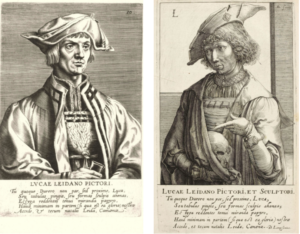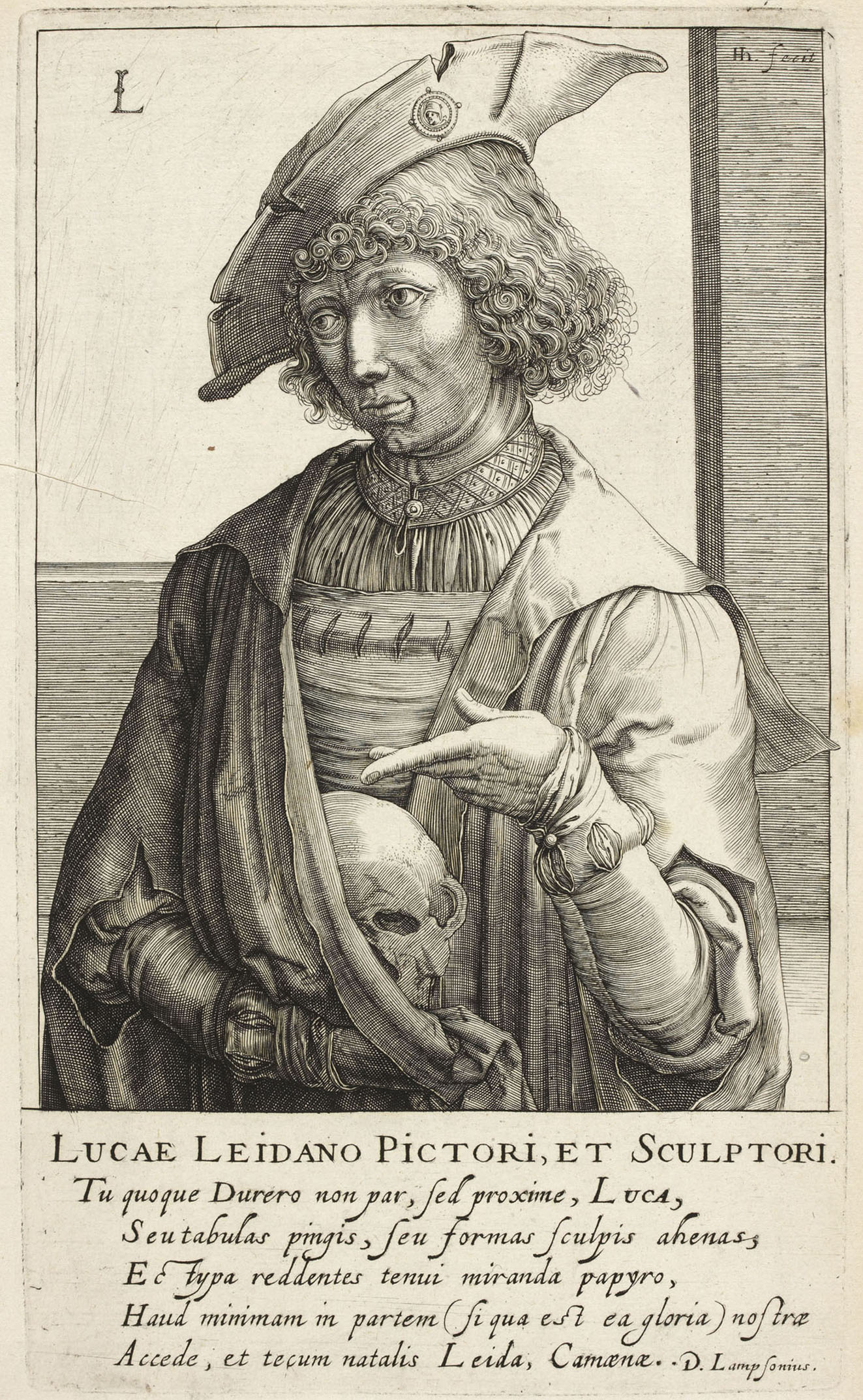Etching
Signed ‘Hh fecit’ by Hendrick Hondius
21.9 x 12.9 cm
Transcription of Inscription [Lampsonius]:
LUCÆ LEIDANCO PICTORI, ET SCULPTORI
Tu quoque Durero non par, sed proxime, Luca,
Seu tabulas pingis, seu formas sculpis ahenas,
Ectypa reddentes tenui miranda papyro,
Haud minimam in partem (si qua est ea gloria) nostrae
Accede, et tecum natalis Leida, Camoenae.
D. Lampsonius.
Translation of Inscription:
To Lucas van Leyden, painter and sculptor1
You too, not equal, but nearest to Dürer, whether you be painting pictures, or sculpting bronze forms which provide marvellous plates for the thin paper, take (if there is any glory in this)2 a place – not the least important – in our Muse’s work,3 along with your native Leyden.
D. Lampsonius

View the 1572 print
View both prints side by side
Footnotes:
- “and sculptor” is not in Lampsonius. No sculpture by Lucas van Leyden is known. The verse shows that sculptor refers to Van Leyden’s activity as an engraver, and engravers marked their work sculpsit. Note, however, the choice of sculptor here and in the titles of 59. Heinrich Aldegrever and 61. Jacob Binck over chalcographus in the titles of 73. Hubert Goltzius and 115. Hendrick Goltzius. Interestingly, Hubert Goltzius is described in the verse as both sculptor and chalcographus, and Hendrick Goltzius is described in the title as chalcographus and in the verse as sculptor. It is possible that the characterization of engraving as ‘sculpture’ was responsive to Vasari’s privileging of sculpture as an art of disegno. At the same time, the appearance of the term chalcographus indicates that engraving was recognized as an art in its own right.
- si qua est ea gloria”: quoted from Virgil, Aeneid 7.4.
- Literally “in our Muse”. Cf. The text on 9. Hubert van Eyck, “Thalia nostra”.


